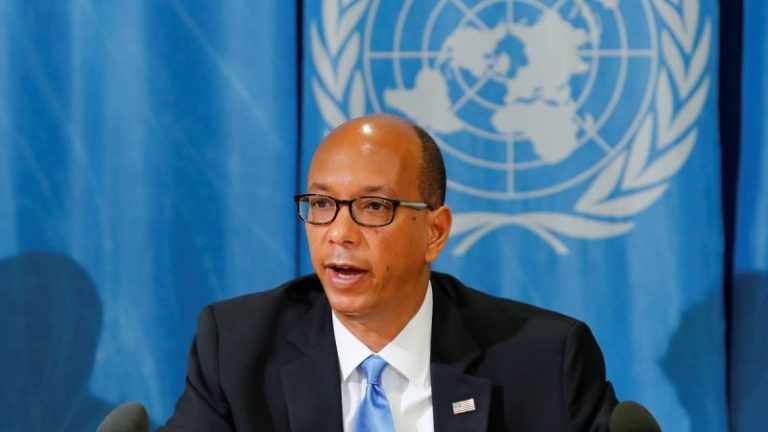As women’s sports surge in popularity, professional leagues are increasingly touting the value of female athletes. New professional leagues like SailGP are launching with the advantage of building from the ground up, with gender diversity as part of their DNA.
Noncontact and noncollision sports are leading the way. Formula 1′s F1 Academy has created a pipeline for women into motorsports, with a goal of increasing female participation and representation on and off the racetrack. At the same time, it’s drawing a more diverse fanbase. Roughly 41% of F1 fans now are female, with women aged 16 to 24 years old making up the fastest-growing fan group, according to Nielsen Sports.
Professional male and female athletes are already competing alongside and against each other in the United Pickleball Association’s unified league, the Global Mixed Gender Basketball league and in SailGP, the international sailing league co-founded by Oracle founder Larry Ellison and champion yachtsman Russell Coutts.
Founded in 2018, the upstart sailing league involves 12 international teams racing on high-speed, 50-foot catamarans known as F50s. At speeds of more than 60 mph, SailGP is gaining a reputation as a sort of Formula 1 on the water.
“The whole goal is to train athletes to be capable of racing on an F50, which is one of the more complex boats in the world — maybe the most difficult boat to race in the world right now,” said Coutts, who is also SailGP’s chief executive officer.
The league didn’t set out with gender equity goals in mind, Coutts said, but simply sought to create the most compelling competition.
“We believe that male and female athletes can compete at the top of our sport against each other and with each other, so when we we saw that there was a difference in participation levels — and didn’t really see any logical reason for that — we took some steps to address that and we’ll take further steps in the future,” said Coutts.
To bridge the experience gap most female sailors face, SailGP created programs to draw and train talent. In December, its Women’s Performance Camp in Dubai, United Arab Emirates, marked its largest on-the-water women’s athlete training camp to date.
The league also requires each team to have at least one female athlete onboard during races and has set targets to have at least two female athletes per race crew in key positions within the next five years. Those key positions are the driver, who steers the boat; the strategist, who advises on tactics; the wing trimmer, who adjusts the 85- to 90-foot carbon-fiber wing sail; and the flight controller, who dictates how high or low the boat flies over the water.
The next SailGP races take place Saturday and Sunday in San Francisco, the second in back-to-back U.S. weekend races.
SailGP has embedded inclusivity and sustainability into the competition via an Impact League that runs parallel to the on-the-water championship. Teams earn points for taking action to make sailing more accessible and to protect the environment in order to reach the podium. Winning teams earn cash prize donations to their partners. The Canadian team is in the lead in the Impact League thanks to its work to offer training opportunities, sailing camps and demo days to introduce foiling to new Canadian athletes.
“That changes the mindframe of very competitive people to care, and to compete, in a world of impact and sustainability as well,” said SailGP Chief Marketing Officer Leah Davis. “When you challenge the world’s most competitive people to be good at something else, they will turn their eyes to that pretty quickly, and in a pretty impactful way.”
Off the water, 43% of SailGP’s C-suite is female, up from just 14% in 2021. For comparison, 29% of C-suite roles at Fortune 500 companies are held by women, according to McKinsey’s Women in the Workplace 2024 report. The league last year introduced Apex Group’s accelerator program, aimed at increasing female representation at senior levels of the company.
It has also introduced initiatives to train more women on the operations, technology and boat-building side of the business. For example, SailGP Technologies based in Southampton, U.K., offers an apprenticeship training scheme — eight participants join the program each year, four male and four female. Today, 33% of directors at SailGP and 52% of heads of departments are female.
The overall business strategy is helping to grow the league’s appeal to a new set of fans. For the first time in its history, more than half of the ticket holders in attendance at last season’s New Zealand Championships in March were female, a trend that has held steady this season.
“This demographic has been underserved in sports,” said SailGP Chief Purpose Officer Fiona Morgan. “A huge part of our headroom in fans is young fans — and actually they’re female fans — who probably didn’t think about sailing, but they like extreme sports or sustainability, or they like sports that have gender equity at the heart.”
In June, Tommy Hilfiger was announced as the United States SailGP team’s official lifestyle apparel partner, joining brands such as Red Bull, Emirates, Mubadala, Rockwool and Deutsche Bank in sponsoring individual teams. In November, SailGP announced it had signed Rolex as its first title sponsor.
“I don’t think many brands nowadays will go into sponsorship that doesn’t have diversity or equity at some point in it,” said Morgan. “Their consumers and their investors will ensure they do that.”
In September, the league achieved a major milestone, announcing its first female driver. Two-time Olympic sailing champion Martine Grael joined for the 2024-25 season to skipper the new Mubadala Brazil SailGP Team, making history and immediately climbing the leaderboard.
After championships in Dubai, Auckland, New Zealand, Sydney and Los Angeles, teams from the UK, Australia and New Zealand are leading the league. Grael has steered her team ahead of the Germany SailGP team, and is proving competitive against the more experienced United States team.
“In the past — and still nowadays — you see a lot of people say, ‘Girls shouldn’t do that,’” Grael said. Her response is to call out that old way of thinking: “Shouldn’t do what?”
Grael credits much of her early success to familiarizing herself with the boats using SailGP’s simulator, developing muscle memory before even getting on the water. Unlike traditional boats built with male sailors in mind, SailGP’s modern foiling boats open opportunities for women in roles that do not require as much physical strength, she said. Knowing when to push a button and developing a good feel for the boat are equally important to the more physical functions, said Grael.
“Some guys have failed to understand that a girl is very much capable of doing the same role they’re doing,” she said.
Grael is among a number of top female athletes competing in key positions in SailGP — including Emirates Great Britain Team’s strategist Hannah Mills and the U.S. team’s Anna Weis — and says though women are still in the minority, things are changing.
Together with women competing in marquee races — like Switzerland’s Justine Mettraux, who took eighth place in the Vendée Globe single-handed, nonstop, nonassisted round-the-world race this year — they are carving a path for a new cohort of women to gain opportunities and make their mark.
“We have been less limited — I grew up never being told I shouldn’t do something,” said Grael. “There’s a big generation of others looking at us, and they’re going to come out strong.”
This post appeared first on NBC NEWS










